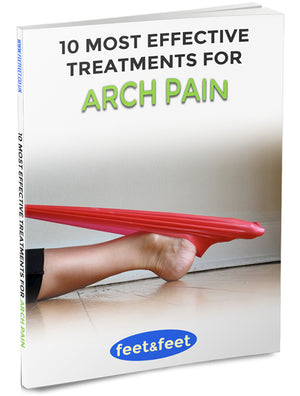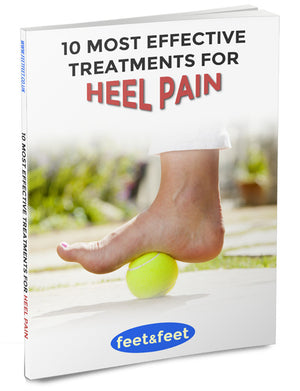What is Overpronation?

You may not usually put any thought into how your feet touches the ground as you walk, perhaps because you’re making the same motion countless times within a day that it begins to feel natural.
However did you know that the way you step can actually affect your health, this is especially important for those of us who participate in sports and athletics. Read on to learn more about what overpronation is, its causes, common symptoms and how the condition can be treated.
Pronation refers to the natural side to side movement of the foot as you step, sometimes it is also referred to as eversion.
The foot should roll a little inward with each step and then each time your heel touches the ground, your arch will flatten and cushion any shock. However, if your foot rolls too far inwards, you overpronate and probably have flat feet.
This is a very common biomechanical problem which is known to occur in young children, adults, especially individuals who do a lot of sports, pregnant women and obese individuals.
There are numerous causes to overpronation and not everyone with overpronation will experience discomfort – in fact some individuals may never suffer from discomfort at all.
However it is when overpronation symptoms develop which cause pain and an increased strain on the feet and calves that you should think about consulting a professional doctor or podiatrist.
What Causes Overpronation?
Specifically, the root cause of overpronation stems from a loss of stability between the ankle bone and the heel bone. Usually, overpronation is actually present from birth as it is a hereditary condition. The condition is also commonly associated with individuals who have a lower than normal arch, however people with a normal or even a high arch can still have overpronation.
There are multiple possible causes and theories that exist for what causes overpronation;
- Damaged, inflamed and torn tendons in the feet can contribute to overpronation
- Damage or injury to foot and ankle bones
- Medical conditions which affect the joints and soft tissues, such as arthritis
- Medical conditions which affect the nerves, such as cerebral palsy, Parkinson’s disease and muscular dystrophy, a condition in which the muscles lose strength and flexibility over time.
Overpronation is more likely to develop in patients with:
- Obesity – This is because of the additional body weight which can add strain onto the tendons which support the arches leaving them more likely to collapse.
- High Blood Pressure – This could be an effect of the blood supply to the tendons which are in the foot.
- Diabetes – This condition affects nerves and can weaken tendons in the feet.
- Pregnancy – Both the additional body weight and the pregnancy hormones can soften supportive ligaments.
- Rheumatoid Arthritis – This condition can weaken and affect the tendons and joints .
- An Extended History of Running – Tendons are strained and most likely worn and torn.
- Greater Age – Tendons can begin to tire and stretch with age.
- Some previous research suggests that patients with a particular enzyme in their body, are at a higher risk of overpronation as the enzyme can damage the tendons directly.

Overpronation Symptoms
If you have had overpronation all your life, chances are you will display no overpronation symptoms at all. The chances are that your feet will have adapted to walking and running as they are, to compensate and will be flexible with no underlying issues with tendons and joints.
However if your overpronation does cause symptoms, they can include:
- Heel or Arch Pain – The pain can be limited to a particular spot or you may be able to feel it throughout the heel and the ankles. This is dependent on which part of the arch is dropping and which tendons are becoming stretched or damaged.
- Flat Feet – The feet don’t have a proper arch due to a misalignment in the hindfoot, which forces the natural arch in your foot to drop and for the sole of the foot to appear flat.
- Hammer Toes – A curling of the toe joints as the overpronation can cause toes to become bent or curl in order to correct the imbalance and handle your body weight whenever you take a step.
- The sensation that the foot is flat or imbalanced, you’re more likely to notice this if only one foot is affected.
Other Related Conditions of Overpronation
Overpronation can also lead to other lower body and foot conditions and injuries. This is because your feet are the foundation to your body. When the ankle bone is misaligned and there is excessive pronation causing strain on the soft tissues within the feet, you’re at a higher risk at developing non-traumatic foot and ankle conditions.
Conditions such as Plantar Fasciitis, bunions, tarsal tunnel syndrome, or hammer toes are much more likely to develop and cause further pain and inflammation in the feet.
A misaligned hindfoot can also lead to a chain reaction of strain on the knees, hips, pelvis and spine. As the ankle bone slips from its original positioning on the heel bone, a naturally occurring space closes up. This results in an immediate shortening in the leg length which can place strain on the rest of the body.
As the ankle bone turns inwards, a strain is placed on the soft tissues in the inner knee which can wear out supporting ligaments. In time, cartilage can become damaged and this excessive wear and tear results in osteoarthritis.
Also, the shortening of the leg can force the pelvis to drop and cause over-stretching in the hip tissues on opposite sides. Sometimes, the sciatic nerve to the hip can become symptomatic and patients can develop the painful condition known as sciatica.
How to Correct Overpronation
Regardless of the cause and symptoms, it is very important to point out that overpronation is a pathological condition which cannot self-repair.
There are several suggested treatment methods to fix overpronation, yet ultimately the best treatment depends on the severity and flexibility of the misalignment.
Some treatment options for how to correct overpronation are:
- Physical Therapy and Prescription Drugs – These two methods aim to address the pain associated with overpronation; however they cannot realign the ankle bone meaning that it is only a matter of time until the pain returns again.
- Muscle Training and Strengthening – There are currently no studies which show that muscle strengthening can realign or stabilise the ankle bone, however the theory is that by strengthening muscles and tendons, you can recreate an arch and realign your foot.
- Arch Supports (foot orthotics) – These devices which can be either custom made, pre-made or over-the-counter can be placed in shoes and are supportive in realigning the foot. Unfortunately there is not enough evidence available which suggests that arch supports can correct overpronation, but they can at least provide support to the arch and reduce some symptoms.
- Extra-Osseous Talotarsal Stabilization – An orthopaedic procedure to fix overpronation in which a stent is surgically inserted into the naturally occurring space below the ankle. The stent realigns and stabilises the ankle bone to allow normal pronation to occur.
If you want to learn more about what overpronation is, or whether you have the condition, you can speak to your doctor or podiatrist for a more detailed explanation.





Leave a comment